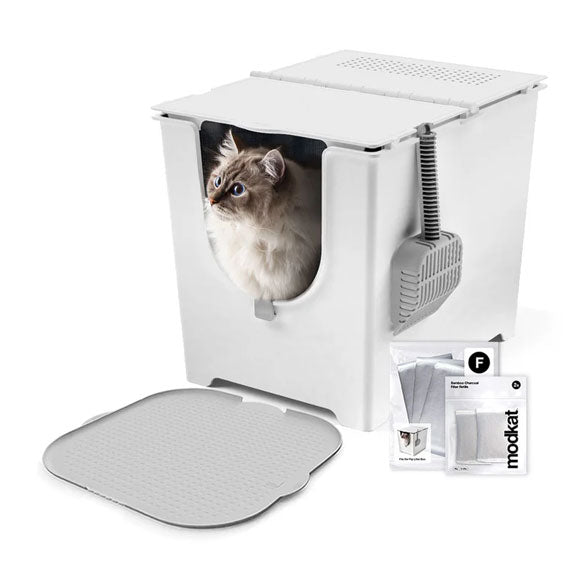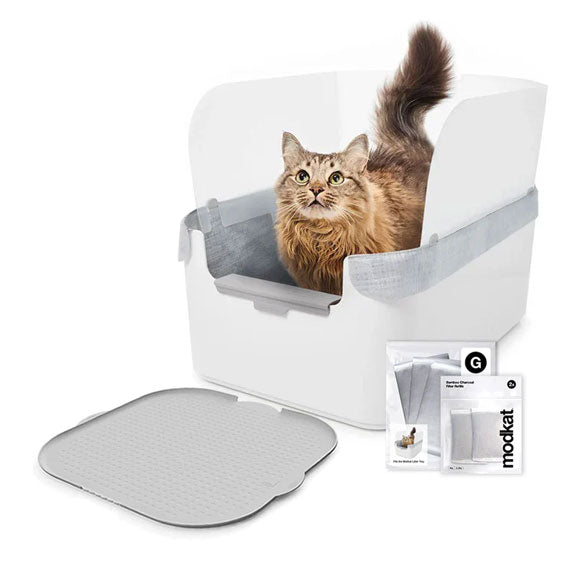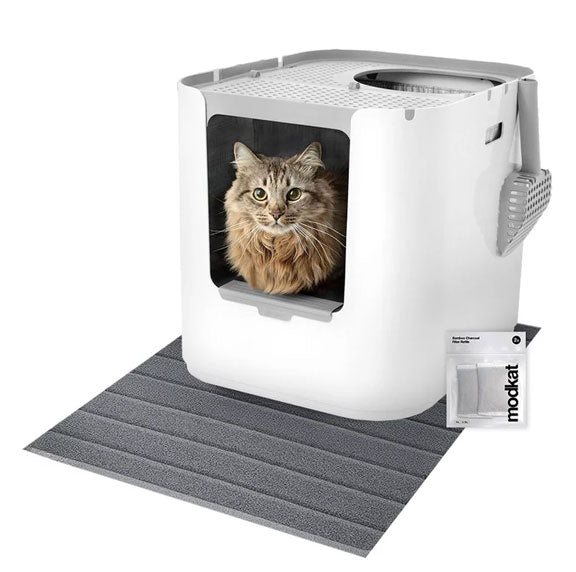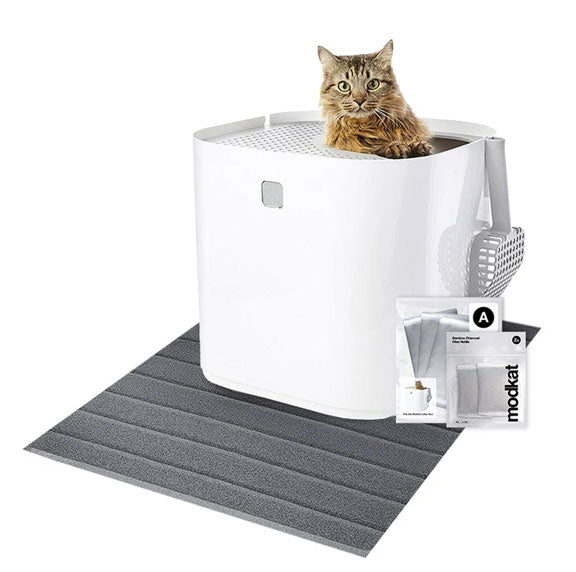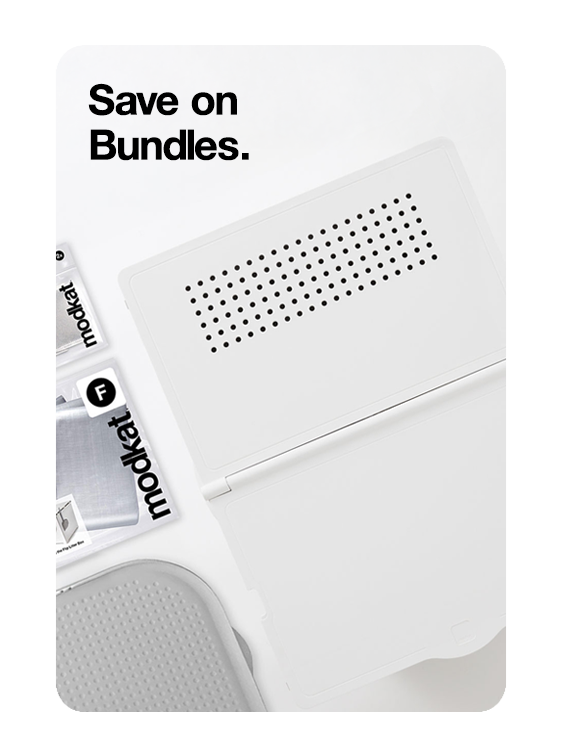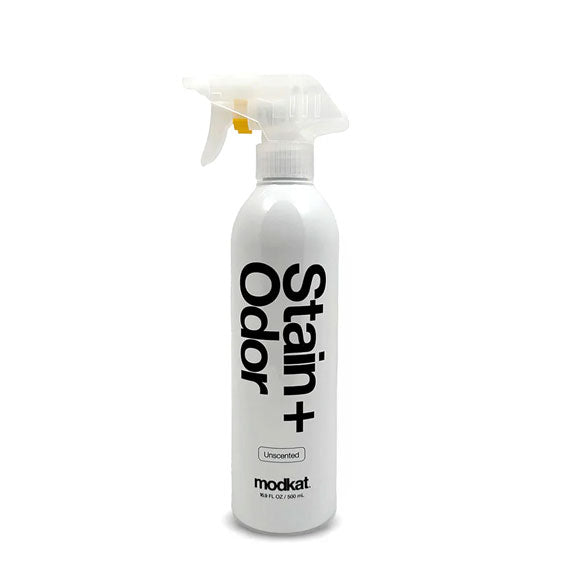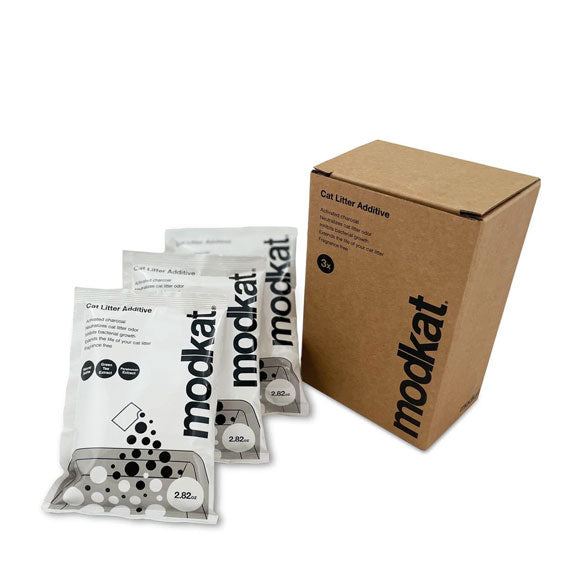Litter Boxes
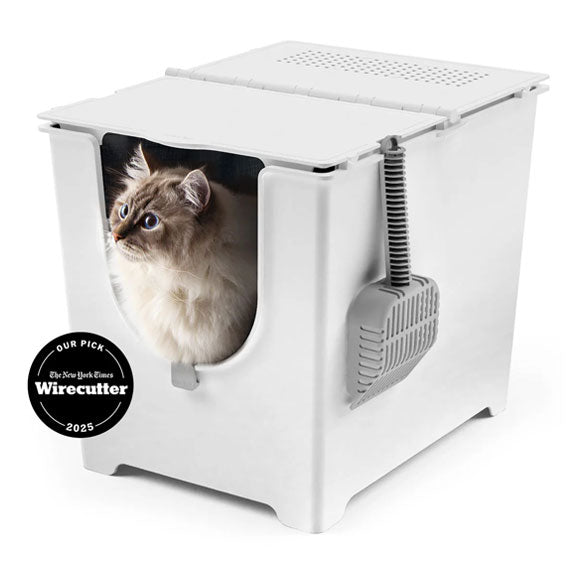
Modkat Flip
Front-Entry Litter Box
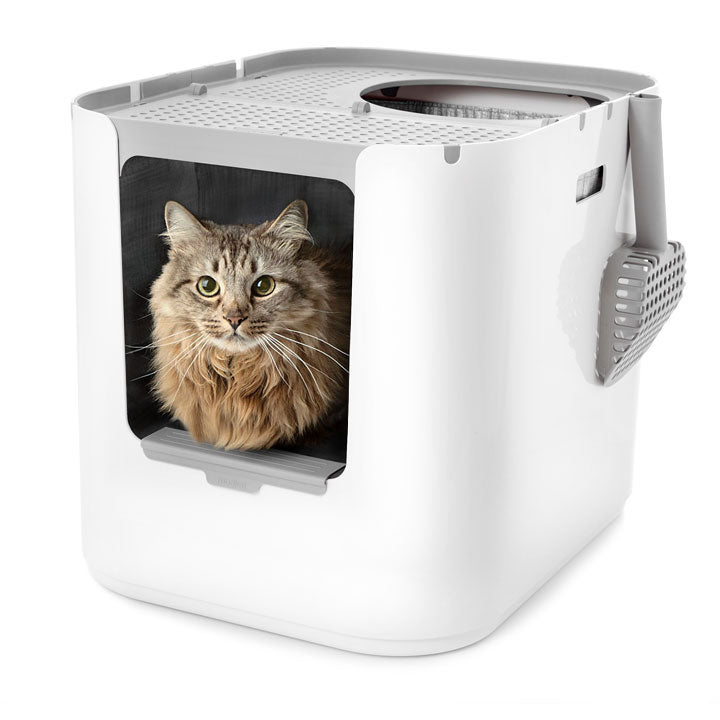
Modkat XL
Front/Top-Entry Litter Box
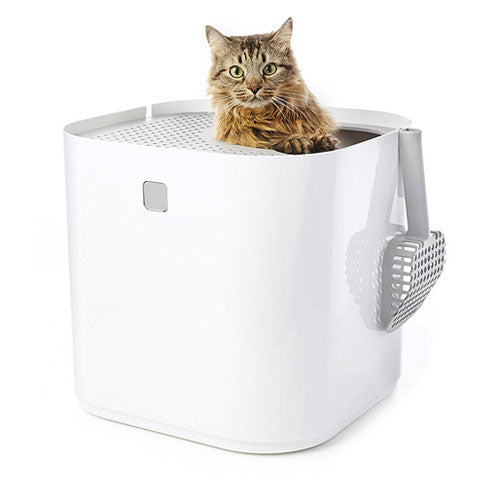
Modkat
Top-Entry Litter Box
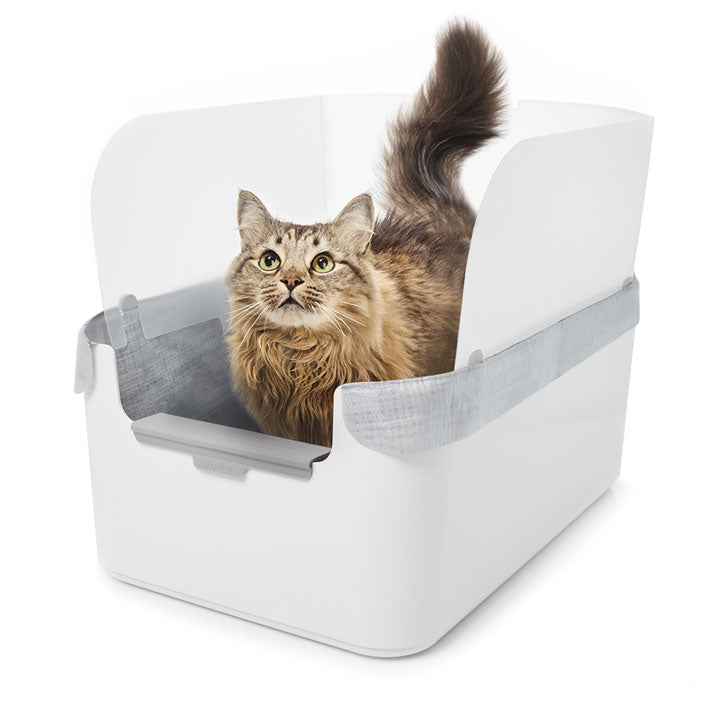
Modkat Tray
Open Litter Box
Bundles
Essentials
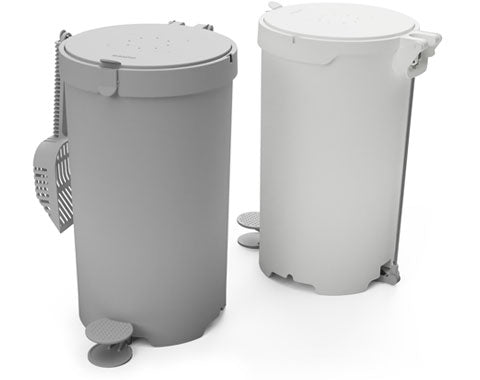
Litter Keeper
Two colors

Litter Mats
Multiple styles, colors & sizes

Tidy-Up Kit
Scoop holder & dustpan

Lounge + Play
Scratchers & toys
Refills
Add description, images, menus and links to your mega menu
A column with no settings can be used as a spacer
Link to your collections, sales and even external links
Add up to five columns
Add description, images, menus and links to your mega menu
A column with no settings can be used as a spacer
Link to your collections, sales and even external links
Add up to five columns
How to be a good cat owner: A quick guide.

The first night with a cat is strange. You’ll hear claws on the floor, a thump in the dark, or maybe nothing at all. Under the bed, they’re holding their breath, and you’re holding yours without realizing it. You don’t know yet if they’ll come out, and they don’t know yet if they want to.
Life together starts there. Not with rules, but with two creatures figuring out if they can trust each other. You scoop, you feed, and somewhere in between, they blink slowly at you. That’s when you know you’re getting it right.
Understanding your cat's needs.
Cats don’t come with instructions. They come with signals—flicks of a tail, tiny shifts in posture, a look that says “back off” or “you’re okay.” At first, you’ll miss them. Keep watching. You’ll learn. That’s the whole secret: watch, adjust, repeat.
Feed them well.
You don’t need the fanciest food, just one that keeps them healthy. Real protein, balanced nutrients, nothing that makes them sick. Ask your vet. Keep water out 24/7. Most cats drink less than they should, so a fountain helps. Don’t quit if they snub it at first. Cats love to pretend they’re in charge.
Adding a fountain or wall shelves isn’t required, but cats who have them often thrive. It’s an easy upgrade if you want to go from good to great.
Make their space safe and interesting.
Hiding spots. High perches. Scratching posts that save your couch from becoming collateral damage. Swap toys so they don’t get bored. And don't worry about spending tons of money. Simple things often make the most-loved toys. A paper bag crackles when they dive in, ears flat and tail flicking. For a minute, the $30 wand toy you bought is forgotten on the floor.
Meet all their needs.
Play twice a day, even if it’s just ten minutes. They need the hunt, even indoors. Right before they pounce, their back end wiggles, pupils go wide, and you catch a flash of the wild hunter hiding under all that domestic fur.
But cats also need quiet to reset. And they need to walk away when they want to. Let them. Trust grows when you respect their rhythm.
Want to understand their signals better? Start with the Humane Society’s take on feline language.
Tips for new cat owners.
Bringing home a cat is messy in the best way. They don’t know you. You don’t know them. You’ll both figure it out.
Do your homework, but believe your eyes. Breed charts say one thing. Your cat will do another. The “lazy” one might climb curtains. The “wild” one might nap like a rock. Ask the shelter staff. They’ll tell you who hides and who greets strangers. Even in a studio, give them a hideaway.
Start with the basics. One litter box that fits your space. A post they’ll actually use. Dishes that don’t tip. A carrier that won’t make the first vet trip a nightmare. Toys are nice, but don’t be shocked when the crumpled receipt wins.
Keep it calm. Close a few doors. Let them come to you. The first week isn’t for cuddles. It’s for proving they’re safe.
Want to avoid the rookie mistakes most people make? The Spruce Pets has a helpful list of common mistakes new pet parents make.
Benefits of cat ownership.
People say cats are independent. They are. But they also show up when you’re sick, sad, or pretending you’re fine. They don’t fix life, but they make it softer.
Companionship and emotional support.
A cat isn’t clingy the way a dog can be, but their company runs deep. They’ll sit on the arm of the couch while you work or curl up on your chest when you need it most. Some nights it’s just you, them, and the sound of purring, and that’s enough. HelpGuide calls it “the joy of owning a cat,” and they’re not wrong. Stress relief and mental well-being
Science says petting a cat lowers stress. You don’t need science to feel your breathing slow when they stretch across your lap. If you’re curious, this research article dives into why they have that effect.
A sense of responsibility and purpose.
Cats make you show up for life. You still have to scoop the box, even when you’re tired. You still pour kibble at 6 a.m. because they’re yelling at the door. You brush them even though they squirm. None of it feels heroic while you’re doing it. But that’s the point. Caring for them is ordinary, and ordinary care is what keeps the bond alive.
Establishing a routine.
Cats love predictability. Feed them at random hours or let the litter box go, and they’ll let you know. Rhythm keeps the peace.
Feeding schedule and portion control.
Pick feeding times and stick to them. Your pet will remind you when you forget. Avoid the bottomless bowl trap. Free-feeding often leads to an overweight cat and a vet bill you don’t want. If you need guidance, this day-to-day cat care guide offers a simple outline. Many owners free-feed without realizing it can lead to weight gain. If you’ve set meal times and stick to them, you’ve already avoided one of the most common mistakes.
Litter box maintenance and hygiene.
Scoop once a day. Empty and wash the box once a week. That’s it. Skip it, though, and your cat might skip the box. A clean box keeps your home livable. If you’re juggling a home office with cat care, Modkat’s work-from-home survival tips can help keep the routine manageable. In general, if you’re already scooping daily and keeping it clean, you’re doing better than many owners. That consistency keeps both your cat and your home happy.
Regular veterinary checkups and preventive care.
Take your cat to the vet at least once a year, even if they act like nothing’s wrong. Cats are pros at hiding pain, so you won’t notice a limp until it’s bad. The vet will, though. Shots, flea meds, and dental checks all help keep them healthy and around for longer.
Building a strong bond with your cat.
You can’t force a bond with a cat. They decide when it happens. You just make it worth their while.
Read their language.
Cats talk with their tails, ears, and eyes. A slow blink is a handshake. A twitchy tail means “back off.” Pay attention, and you’ll start catching the small things—a shift in posture, a tiny meow that means something different than the loud one. If you’re unsure, this guide on bonding breaks it down in plain language.
Play like it matters.
Play is their hunt in safe form. A few minutes with a feather or string keeps their instincts sharp and your bond stronger. It’s the closest they get to the wild. And for those ten minutes, they’re not just your pet. They’re a tiger in the living room, and you’re part of the chase. Some cats prefer quiet company. Others demand the chase. Figure out which one you’ve got. For more ideas, PetMD has six solid ways to bond.
Give them a choice.
You can’t schedule affection on your terms. Offer a treat when they edge closer, scratch under the chin when they tilt their head just so, and let them ghost you mid-pet. If you’re wondering whether they ever really love you, this Modkat article says yes, and the science backs it. You become a good cat owner by learning their cues, meeting them where they are, and letting them set the pace.
Addressing common challenges.
Cats will charm you one second and wreck your plans the next. They’re chaos wrapped in whiskers, and living with one means solving tiny mysteries daily.
Litter box headaches.
If they stop using it, don’t scold—investigate. Cats don’t do business outside the box out of spite. Pain is often the culprit, so get the vet visit out of the way first. If that’s clear, start tinkering. New litter, a second box, a quieter corner. You’ll clean up accidents, sure, but you’ll notice the small win when they start using the box again.
Scratching battles.
You’re not going to stop a cat from scratching. It’s how they stretch and mark their turf. What you can do is give them better options. A cardboard scratcher, a sisal post, a mat—anything they’ll actually use. When they use it, reward them. When they don’t, cover the furniture and try again.
Anxiety and other odd behaviors.
Some cats unravel when you leave. Build their confidence with short absences, then longer ones. Keep a routine. Leave a shirt that smells like you. Feed and play on a schedule. Change too much at once and you’ll see the stress. The Humane Society offers tips for helping anxious cats settle in.
Multi-cat drama.
If you have more than one cat, expect some tension. Give them extra of everything, including boxes, bowls, and beds. Some cats don't like to share. That’s okay. Don’t force them to be friends. Sometimes, the best outcome is two cats ignoring each other in peace.
This is the part of cat ownership no one brags about. You don’t fix every challenge overnight. You listen, adjust, and keep working at it. For more reminders of what to avoid, The Spruce Pets has a list of common mistakes.
Creating a safe environment.
Your house looks fine to you. To a cat, it’s full of traps. Loose wires, open windows, plants that can kill them. See it from their level.
Cat-proofing the basics.
Hide cords. Cover trash. Lock up cleaners. Close windows unless they’re screened. Get rid of toxic plants or put them where a cat can’t reach, which is almost nowhere. This checklist from Cat Friendly Homes is a good place to start.
Toys and enrichment cats will actually use.
Cats need to stalk, chase, and pounce. Wand toys, tunnels, and crinkle balls help get your pet moving. Rotate them so the toys don’t just become floor clutter. Don’t overthink it—a paper bag can entertain them for an hour. These little tweaks go a long way, especially for a nervous cat settling in. The Spruce Pets explains how to set up a safe room if you need a calm space for them to start.
Giving them places to climb.
Cats like to be up high. They’ll take the top of the fridge or the bookshelf if you don’t give them an alternative. Add a cat tree, wall shelves, or a window perch so they can watch the world safely. If you live in a small apartment, explore our tips for making small spaces cat-friendly.
These first-time cat owner tips might sound simple, but they make the difference between a cat who’s stressed and one who feels at home. And if you’re introducing a cat to a dog, remember to go slow, keep everyone safe, and err on the side of caution.
Commitment to lifelong care.
A cat isn’t a six-month adventure. They’ll be with you through job changes, moves, breakups, and birthdays. You don’t just get the purring and the cuddles. You also take on the messes, the vet bills, and the hard days at the end. That’s the deal when you choose to become a pet parent.
Spay or neuter early.
If it hasn't already been done, do it. It keeps your pets healthier, prevents certain behaviors, and avoids litters you can’t care for. Spaying or neutering is one of the simplest ways to do right by them. If you’re still deciding on adoption, read why it matters to adopt instead of buy.
Grooming and dental care.
Even short-haired cats need a brush now and then. Otherwise, you’ll be cleaning hairballs off the carpet. Teeth are the same story. You won’t notice a problem until it’s bad. By then, it’s expensive. If they’ll let you brush, great. If not, have the vet check them every year and clean them when needed.
The long road ahead.
Cats live longer than most people expect. Fifteen years isn’t unusual. Those last years take more from you—extra vet visits, special food, meds, and patience. They give back in their own way: quiet company, slow blinks, and the same love they’ve always had. The New York Times has a good piece on planning for the long haul.
When you bring a cat home, you take all of it. The late-night play sessions, the shredded curtains, the vet trips, and the soft moments on the couch. That’s how to be a good cat owner. Show up for them, every year, until the very end.
FAQ: Common questions about being a good cat owner.
How often do cats need the vet?
Healthy adults usually do fine with a yearly visit. Kittens need more early on. Seniors? Twice a year. Any sudden change—hiding, skipping meals—go sooner.
Is one litter box enough?
For one cat in a small place, yes, if you keep it clean. Multi-cat homes need one per cat plus one extra, spread out so no one feels cornered.
Can cats go outside?
They can, but cars, predators, and disease make it risky. Safer options: a catio, enclosed balcony, or harness walks.
What food is best?
The one that fits their age, health, and energy. Ask your vet.
How do you make a small apartment cat-friendly?
Think up, not out. Add shelves, perches, tall posts. Rotate toys. Give them one corner to retreat to.
How do cats show love?
Slow blinks. Head rubs. Purring. Following you from room to room. Their love is quiet. You just have to see it.
What’s the hardest part?
The goodbye. They give you years of small moments. One day, those moments end. Sticking with them through all of it—that’s the real commitment.
Quick takeaways: How to be a good cat owner.
- Pay attention. Watch their signals, adjust your care, and build trust slowly.
- Keep routines. Consistent feeding, clean litter, and regular vet visits keep them healthy and happy.
- Make the home theirs. Add safe spots, scratching posts, and vertical spaces, even in small apartments.
- Play and bond. Ten minutes of interactive play and quiet time each day makes a big difference.
- Commit for life. Cats need care from kittenhood to their final years. Show up for all of it.
Ready to upgrade your cat’s routine?
Explore our award-winning litter boxes and accessories designed for modern homes.
“It looks nicer than any other hooded or open option we considered.”

Categories
Meow from Brooklyn.
Sign up and get early access to product drops, exclusive offers, and the occasional cat meme.
Similar products related to this blog:
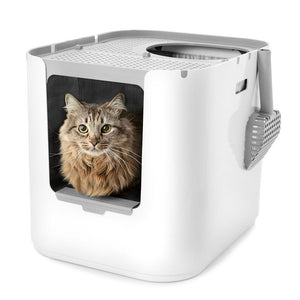
"It looks nicer than any other hooded or open option we considered."


"This litter box keeps everything in, nothing gets out the sides."
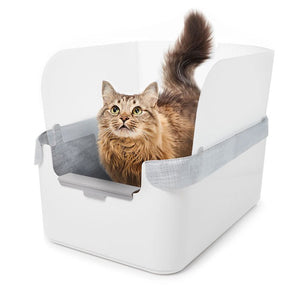
"My beautiful ragdoll cat and I both love the new Modkat Litter tray!"

